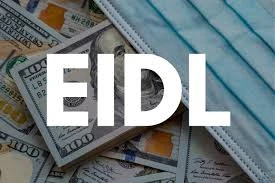The number of questions I’ve gotten on the Economic Injury Disaster Loan (EIDL) Program has increased significantly over the past couple weeks. Below is a Q&A that will help you better understand the EIDL program.
1. What is the EIDL Program? And what is the EIDL Advance?
-
From sba.gov, “In response to the Coronavirus (COVID-19) pandemic, small business owners in all U.S. states, Washington D.C., and territories are able to apply for an Economic Injury Disaster Loan advance of up to $10,000. This advance is designed to provide economic relief to businesses that are currently experiencing a temporary loss of revenue. This loan advance will not have to be repaid. Recipients do not have to be approved for a loan in order to receive the advance, but the amount of the loan advance will be deducted from total loan eligibility. SBA will begin accepting new Economic Injury Disaster Loan (EIDL) and EIDL Advance applications on June 15 to qualified small businesses and U.S. agricultural businesses.”
-
If you have a Paycheck Protection Program (PPP) loan, the EIDL Advance WILL have to be repaid
2. What are the terms of the EIDL Loan?
-
3.75 Fixed Interest Rate
-
30 Year Amortization
-
Payments are deferred for up to a year; however interest accrued during this period
3. What can you use EIDL proceeds for?
-
Unlike the PPP program, EIDL loans do not come with approved uses. The SBA describes the EIDL as “working capital loans available to assist small business concerns … in order to meet their ordinary and necessary financial obligations that cannot be met as a direct result of the disaster. These loans are intended to assist through the disaster recovery period”. Certain SBA field offices¹ put out additional information on the program, which indicate the following approved uses:
-
Fixed debts (rent, etc.)
-
Payroll
-
Accounts Payable
-
Some bills that could have been paid had the disaster not occurred
4. What are the ineligible uses of EIDL proceeds?
-
Payments of any dividends or bonuses
-
Disbursements to owners, partners, officers, directors, or stockholders, except when directly related to performance of services for the benefit of the applicant
-
Note: Page 186 of the SOP², lists “owner’s draw/salary when the draw is both normal and essential” under “normal obligations, which the business would not be able to meet throughout the remainder of the injury period”
-
Repayment of stockholder/principal loans, except when the funds were injected on an interim basis as a result of the disaster and non-repayment would cause undue hardship on the stockholder principal
-
Expansion of facilities or acquisition of fixed assets
-
Repair or replacement of physical damages
-
Refinance long-term debt
-
Paying down (including regular installment payments) or paying off loans provided, or owned by another Federal agency (including SBA) or a Small Business Investment Company licensed under the Small Business Investment Act. Federal Deposit Insurance Corporate (FDIC) is not considered a Federal agency for this purpose
-
Payment of any part of a direct Federal debt (Including SBA loans) except IRS obligations (Additional requirements noted on page 75 of the SOP²)
-
Pay any penalty resulting from noncompliance with a law, regulation or order of a Federal, state, regional, or local agency
-
Contractor malfeasance
-
Relocation
5. What else do I need to know?
-
You CANNOT use proceeds from the PPP and EIDL for the same purposes
-
Paying yourself may impact your ability to receive unemployment during the same period of time
-
There is a good chance the EIDL loan will be reported to various credit reporting agencies
-
Loans greater than $200,000 are likely to require a personal guarantee
-
Collateral is required for loans greater than $25,000
-
There are no prepayment penalties
-
The SBA requires you keep books and records for the most recent 5 years until 3 years after the date of maturity or when the loan is paid in full. You will have to keep “itemized receipts and contracts for all loan funds spent
